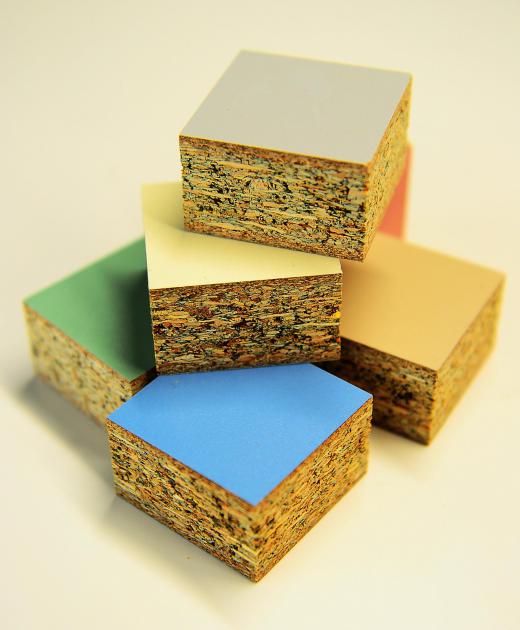Also known as oriented strand board or OSB, waferboard is a wood panel composed of flakes that are compressed to create a sturdy and workable building material. This type of chipboard is classified as one example of particleboard and can sometimes be used in building projects in the place of conventional plywood panels. While normally known as particleboard in the United States, panels of this type are often referred to as Sterling board in the United Kingdom.
The creation of waferboard involves compressing individual flakes into a flat panel. In order to achieve the shape and consistency desired, the wood flakes are joined with the use of resins that effectively bind the flakes or wafers to one another. The panel is subjected to a high degree of heat and pressure, which helps to seal the bond and also compress the surface of the board until it is flat. As a result, the panels are relatively strong and can be used for a number of building projects.

One of the more common applications of waferboard is in the creation of inexpensive but functional pieces of furniture. Items such as television stands, computer desks, and various types of shelving can be created using this type of board. The pieces are often covered with some sort of laminate designed to mimic the appearance of wood grain. Furniture of this kind is often sold in easy to assemble kits, and is often sold at discount retail stores.
Just as with plywood and MDF, waferboard can be manufactured to any degree of thickness desired. Thinner boards may be ideal for use in creating temporary walls within an edifice, such as the preparation of a stage set in a theater. The thicker boards can be used to create functional shelving that can be mounted directly on a wall and support an equitable amount of weight. Most products made with this type of board are graded, allowing consumers to know how much stress the board can stand up to and remain functional.
While waferboard is a versatile product, it is not always the best option for various building projects. Furniture created with the use of this type of board is less likely to last for extended periods of time than solid woods. Water can damage the integrity of waferboard, and in some cases even cause the flakes to begin separating. Fortunately, people who purchase inexpensive furniture made with this product usually are looking for an item that will be useful in the short term, while they set aside resources to purchase something that is more likely to last for many years.

